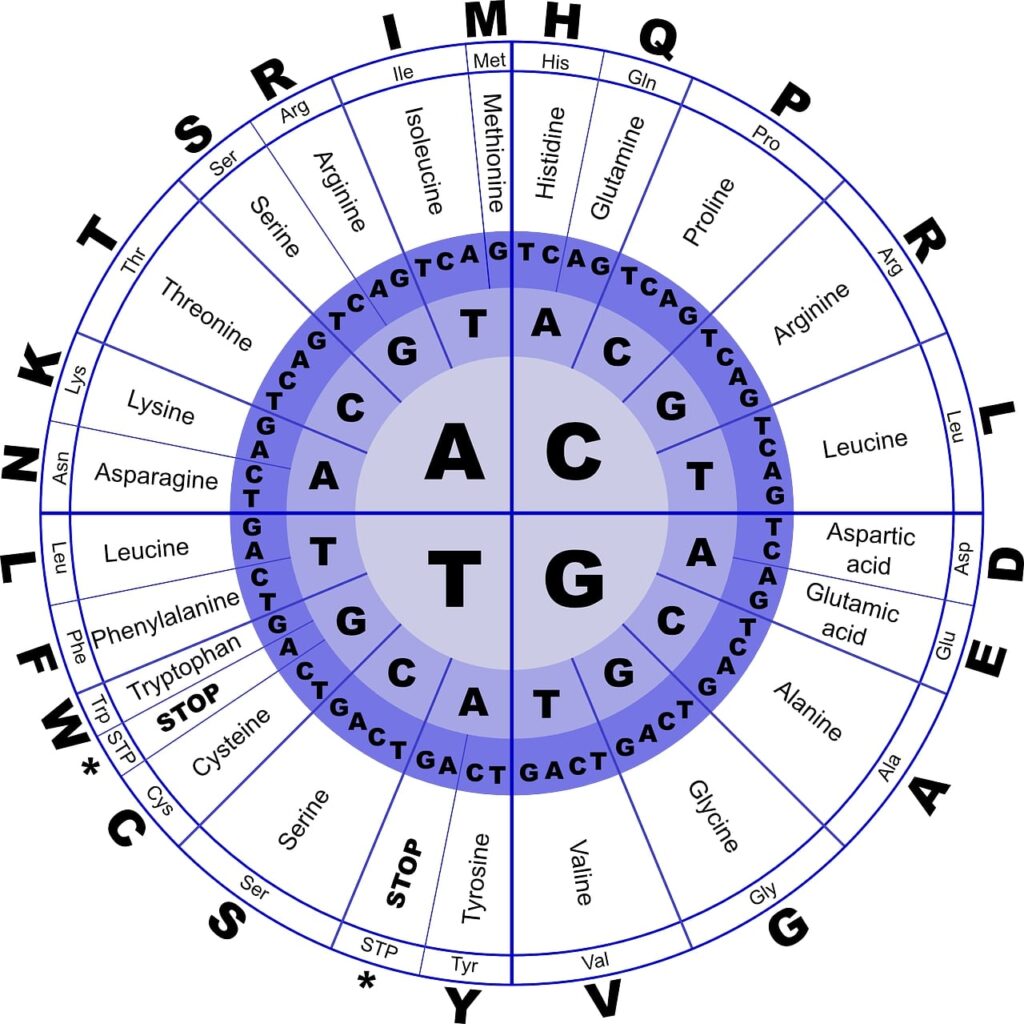10 Things You Didn’t Know About DNA
DNA is one of the most important molecules in the human body, and it’s a key to understanding human development and health. However, there are ten shocking Things You Didn’t Know About DNA. Let me explain to you these amazing facts one by one. It will expand your understanding of DNA.
It is the blueprint of life. It contains information about how to build and maintain living things. Cells use DNA to create proteins that are essential to life. DNA also stores genetic information, like how a person’s eye color is determined or what they will look like as they grow up.
1)- DNA comprises two strands, known as chromatids.
DNA is a naturally occurring molecule that makes up the genetic makeup of all living things. It is made up of two strands, known as chromatids. These strands are joined together by the interactions of four different bases that form an intricate sequence.
DNA is found in the nucleus of a cell. The two DNA strands are made up of four bases: adenine, thymine, cytosine, and guanine. These bases are arranged in pairs on the DNA strand to form an A-T or C-G base pair.
These bases come in pairs – one on each strand – and the sequence of these pairs determines which genes are active in cells, which proteins can be created, and what traits an organism exhibits during its lifetime.
This is called a base pair because they always come together in these pairs and only work with each other. The two strands then twist each other to form a double helix shaped like a spiral staircase.
Reference: Multistranded DNA structures

2)- The number of human chromosomes varies from 23 to 46, depending on the person’s sex.
The number of chromosomes in humans varies from 23-to 46, depending on the person’s sex. Chromosomes are DNA molecules that house your genes. They are thought to be responsible for physical and mental traits that define a person and their reproductive habits.
Humans have 23 pairs of chromosomes, with each chromosome carries many genes. The chromosome pairs are called autosomes, and the sex chromosomes are called X and Y. The sex chromosomes determine whether someone is female or male, while the autosomal pairs determine what traits they inherit from their parents through gene expression.
Reference: THE GENETIC ORGANIZATION OF CHROMOSOMES
3)- A single cell can contain 1-5 billion base pairs (the DNA building blocks).
DNA is the material that contains all of the information to create a living organism. Scientists also use it as a code to trace and find out where an organism comes from. One cell can contain up to 5 billion base pairs, or it could be less depending on its size.
4)- Genes are not located on chromosomes but are found on stretches of DNA called genes
While genes are never where they’re located on the chromosomes, they are found on stretches of DNA called genes. The gene is a sequence of nucleic acid sequences with specific sequences that determine when and how an organism’s genetic information is used to produce a protein.
Genes are DNA stretches containing the information cells need to build proteins and other molecules. Genes are not found on chromosomes, but they are found on stretches of DNA called genes.
Genes are composed of two parts: a coding region and a regulatory region. The coding region is the part that contains the information that cells need to build proteins and other molecules.
The regulatory region tells cells when and how to make proteins. So genes are DNA stretches containing the information cells need to build proteins and other molecules.
5)- Humans have around 20,000-25,000 genes, while fruit flies have approximately 12,000 genes
If you’re wondering how fruit flies got so different from humans on earth, they have 12,000 fewer genes. They also have one type of DNA, which is simpler than humans.
Humans have around 20,000-25,000 genes, while fruit flies have approximately 12,000. This is very interesting because it shows how much more complex humans are than fruit flies.
Humans have more genes that allow for broader skills and functions. Fruit flies only have the genes that are needed to survive and reproduce.

6)- Cells use RNA to make proteins which are then translated into functional proteins that do work inside cells
Proteins are essential for all cells in the body to function and survive. They build and maintain tissues, create enzymes, regulate the metabolism of cells, and more. Every cell in the body has an RNA message translated into a protein message that can work inside cells.
The process of translating RNA into proteins is called transcription. The first step in this process is the production of an RNA molecule from DNA. This RNA molecule is a copy of a section of the DNA molecule and has a sequence corresponding to the section it came from.
The next step in this process is called translation. This step converts the RNA sequence into an amino acid sequence which can be used to make protein. This means that there are 20 different types of amino acids, and these are combined to form a long chain, or polypeptide, which can then fold up into a specific shape and perform work inside cells.
7)- The sequence of the DNA in a strand determines the order of the genes on that strand
The human genome contains about 3 billion base pairs, the chemicals that make up DNA. A single strand of DNA is composed of two strands joined together. The order of these base pairs determines the order of genes on that strand.
The DNA sequence in a strand determines the order of the genes on that strand. The sequence is called the nucleotide sequence. The nucleotides are adenine, thymine, guanine, and cytosine. They have been abbreviated A, T, G, and C, respectively. These four bases form different combinations to code for specific amino acids in a protein sequence.
DNA is composed of two strands that run in opposite directions, hence the double helix shape. Each strand contains a series of nucleotide pairs held together by hydrogen bonds between the bases on each pair – A with T and G with C.
8)- As DNA replicates, it gains new “letters” and rearranges itself to form new combinations
DNA is the key to life. Every organism contains DNA that constantly replicates and mixes itself to form new combinations of letters that create proteins and enzymes. As the human body ages, it also has a natural process of replication, but with age comes changes in the makeup of DNA. These changes can lead to disease or even death in extreme cases.
DNA replication is the process by which DNA makes copies of its two strands. This process occurs due to the separation of chromosomes during nuclear division. The separation of chromosomes is initiated by an enzyme called helicase, which moves along the molecule and separates the two DNA strands.
DNA replication is a process in which cellular machinery makes a copy of the genetic material contained in chromosomes. DNA is copied to form two new, identical strands attached to an original single strand, resulting in a double helix. According to research, cohesion between sister chromatids must be established during DNA replication.
9)- The helix shape helps DNA replicate
The helix shape is a double-helical structure that allows DNA to replicate. DNA is the genetic material that controls how a cell grows, develops, and functions. DNA replicates due to its helix shape, making it easy for the two strands of DNA to separate during replication, forming two new strands.
DNA is a double-stranded helix. The two strands of DNA are tightly coiled around the same axis, like a spiral staircase. The two strands are called the “ladder” and the “staircase.”
The ladder is made of sugar and phosphate molecules, wh form rungs. The staircase is made of nitrogenous bases. A base always pairs with another base: adenine (A) with thymine (T) and cytosine (C) with guanine (G).
The helical nature of DNA helps it to replicate itself when cells divide. When cells divide, new copies of DNA are created for each daughter cell by splitting the old double helix in half lengthwise and then unzipping it to create two identical single-stranded helices.
DNA is a double helix with two strands twisted around each other. The strands are made up of four different types of molecules called nucleotides. The helical shape of the DNA molecule helps it replicate. When the DNA replicates, the two strands separate, and new nucleotides are added to one strand simultaneously.
10)- There are two basic types of DNA, eukaryotic and prokaryotic.
DNA is a very simple molecule but can be broken down into two types. These two types of DNA are eukaryotic and prokaryotic. Eukaryotic DNA is found in all living beings, while prokaryotic is typically found in bacteria or other single-celled organisms.
The two basic types of DNA are eukaryotic and prokaryotic.
– Eukaryotic DNA is found in organisms with a nucleus, such as plants, animals, and fungi. On the other hand, prokaryotic DNA is found in bacteria. In other words, Eukaryotes are organisms that have cells with a nucleus. Conversely, prokaryotes are organisms that do not have a nucleus in their cells.
– Eukaryotes have a nucleus, and prokaryotes do not. The nucleus contains the gene cells’ genetic material, led the genome. The genome consists of genes that are made up of DNA.
– Eukaryotic cells are larger and more advanced than prokaryotic cells. This is because the DNA in a eukaryotic cell is located in the nucleus, while the DNA in a prokaryotic cell is located in the cytoplasm.
– The prokaryotic cell is simpler than the eukaryotic cell. The prokaryotic cell has no membrane-bound organelles and does not have a nucleus or other membrane-bound structures, such as mitochondria or chloroplasts.
– The eukaryotic cell has more complex structures, including organelles, specialized parts of the cell that carry out specific functions. These include the nucleus, which regulates the activities of DNA; mitochondria, which provide energy for the cell; and chloroplasts, which produce food for the organism from sunlight via photosynthesis.
Conclusion
DNA is a molecule that contains the genetic instructions used in the development, functioning, and reproduction of all known living organisms and many viruses. The DNA segments that carry this genetic information are called genes, and their sequence is the genetic code.
The human genome contains about 1-5 billion DNA base pairs, equivalent to about 3 gigabytes of data.
DNA has four types of building blocks: adenine (A), guanine (G), cytosine (C), and thymine (T). These building blocks are arranged into structures called chromosomes. Humans have 23 pairs of chromosomes for a total of 46 chromosomes in each cell.
Related Posts:
1- What is DNA
4- Which Career Combines DNA Technology And Agriculture?
5- Which Career Combines DNA Technology and Forensics




